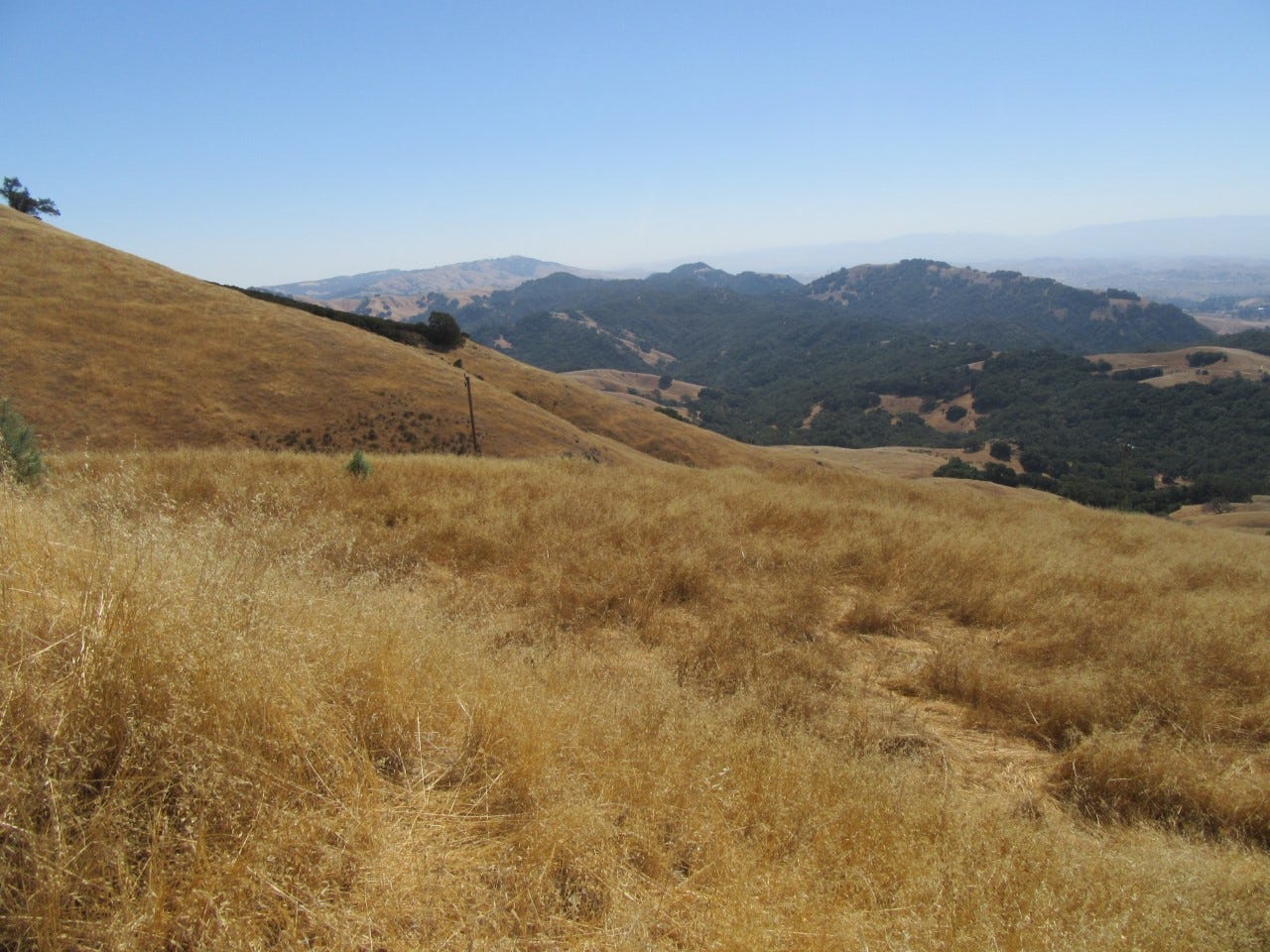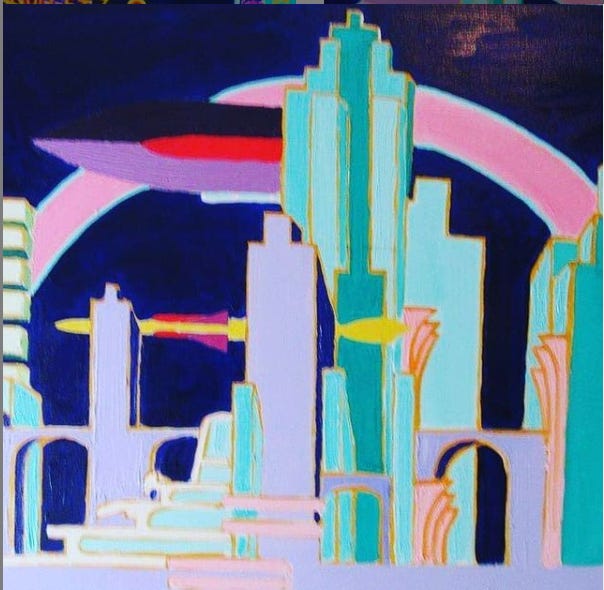Book Review: Vaporfornia
“In my sleep my mind tries to process all my photos and other images I found online. The visuals of the golden hills, neon lit cityscapes, and girls I like; both from school and from social media all blending together in my dreams. The gold from the hills, gold neon, and girls’ hair all now just one blur of gold. Whenever I dream, I can sense what I’m missing out on. Sometimes I see it vividly yet locked out, unable to touch or partake. The energy representing everything I so deeply desire surrounds me, yet I’m still alone in a dark bubble.”
—Robert Stark, Vaporfornia (2021)

I first met Robert Stark in 2018 during an exciting time of growth in my life which had largely been stimulated by my discovery of his podcast. I met him in Santa Barbara on my way from LA to visit San Francisco for the first time, and I can’t imagine a more fitting circumstance under which to meet. Beyond being a political and aesthetic inspiration, Stark— a fifth generation Californian, and lifelong native—has been my tour-guide to the state in the years since we met, ushering me down more neon-lit urban streets and to more charming inland towns than I would have found in decades on my own as a transplant.
But all is not well in paradise, and no one knows this better than Robert. Just as he has a sharp eye for the persistence of the California dream within its aesthetics and geography, his sense of the social and political forces which have dragged the state down for decades is just as astute, and his thriving substack is dedicated to honestly grappling with them. With his new novel Vaporfornia, Stark— as much a painter with words as a novelist— contrasts a blunt look at the decay of the California dream with a bold vision for the future we could have had.
Vaporfornia is a much more sophisticated work than Stark’s first novel, 2017’s Journey to Vapor Island. The riotous black-comedy, meme-references and lapses into shocking paraphilia that made Vapor Island a classic are certainly still here, especially toward Vaporfornia’s maximalist conclusion, but at the outset the novel is much more personal, introducing us to Max Von Mueller: a native of Walnut Creek, California in San Francisco’s East Bay. Max is a quiet and demure recent high school grad with journalistic ambitions. He had a rough time in high school, but has high hopes for the future. His guiding light: a passion for the environment, art and architecture coupled with a sense of social-justice founded on the conviction that everyone deserves access not just to a subsistence living, but to beauty.
What kind of politics should a man with such passions espouse in the modern world? Max is confused about it when we first meet him and sounds comically, at times, like an “SJW” or fellow-traveler of the woke left. He’s no Republican like his cable-news-watching, boomer father, but he can see through the empty neo-liberalism of Democratic Presidential front-runner Dave Cohen-Rodriguez. Certainly he’s not going to vote for that “fascist” real estate mogul Roger Blackstone who is rising in the poles as a third-party dark horse; and yet Max can’t help but be intrigued by Blackstone’s out-of-the-box solutions, and seduced by his innumerable, immersive development projects across California. Over the course of the novel, as one upsetting experience leads to the next, the onion layers of Max’s world-view start to unfurl, and he becomes an unlikely Blackstonian.
Vaporfornia takes a look at the decline of California, at least as a place where average folk might have a shot at a good life— the luxury behind the walls of gated communities elite industries, and private schools notwithstanding. The increasing scarcity of access to beauty, in fact— whether in the form of nature, walkable urbanism, or, most controversially, the most attractive breeding stock— is precisely the issue that animates Max’s outlook and Roger Blackstone’s campaign alike. Max initially approaches the issue as a matter of social justice and equality, whereas Roger Blackstone fancies himself a hardened Promethean, laying conquest to the hoarded “positional goods” of the Olympian gatekeepers for the betterment of society. But they meet in the middle soon enough.
Regarding this question of decline, the overriding sense one gets while reading Vaporfornia is that it was written by someone who knows. Robert Stark is a member of exactly that demographic that political and social forces have conspired to squeeze out the state over the past several decades: the white, middle-class. Stark’s connections to California run deep. By California standards, five-generations is a long lineage, and Stark has fascinating family stories to match. He’s told me about great grandparents in the textile trade, property in East LA that would have been worth tens of millions if sold now, family ownership of a windmill in Solvang, and a connection to both “The Maltese Falcon” and The Black Dahlia murder that you’d have to ask him to explain. All of this ostensible grounding, and yet I think California has become an increasingly alienating place throughout Stark’s life. This sense of alienation, or a declining horizon— of “lost future” to put it in the vaporwave/ “hauntological” terms which lend themselves so well to Stark’s work— is common to elder-millennials across America. Yet like so much else, its a bit accelerated and bit more obvious in the golden west.
To comment on the writing style of Vaporfornia: I think it is best understood as a literary extension of Robert Stark’s painting. Described recently Gio Pennacchietti as “fauvist vaporwave”, I myself have made the comparison to the “naive” or “untrained” vision of Henri Rousseau .Stark, like Rousseau has an evidently unique way of seeing the world and set of particular fascinations in terms of subject matter. His, like Rouassea’s, is a personal vision which casts aside social mores and “good taste” in the pursuit of truth. Also like the French post-impressionists: there are visions of Arcadia aplenty in Stark’s work, and this cross-bred with retrofuturism is where the Vaporwave aspect comes in.
There are sections of Vaporfornia where it seems that Stark sees something so clearly he could paint it— more often than not, one of the complex, immersive, architectural developments he describes in the book. These sections demand a certain patience and attention of the reader. An early section which exhaustively describes the itinerary of a visit to San Francisco comes to mind, as does a vividly imagined renovation to LA’s Beverly Center, later in the book. This style might not be for everyone, but for those who can get on its wavelength: Vaporfornia has lush treasures to bare, and many moments of laugh-out-loud hilarity.
Stick around for: an emotional night in an neon-80’s dance club on the Santa Cruz boardwalk, a vision of life in the geriatric sprawl of Modesto, California that veers closer to American History X than American Graffiti, a freak out in a super Wal Mart, an abduction near Yosemite National Park, and climactically: a Hollywood extravaganza produced by the execrable Ari Meschel, whom readers may remember from Journey To Vapor Island. And guess who’s the star? Like Justin Theroux saying “This is the girl” in Mullholland Drive, it seems our overlords have a use for Max Von Mueller.
Ultimately, the personal and political merge seamlessly in Vaporfornia, and perhaps nowhere more clearly than in the symbolism of one of Max’s dream-visions toward the book’s conclusion. Max finds himself lost in the labyrinthine bowels of the renovated “Beverly Experience” in LA, immersed in a hypnogogic state, when he comes across:
…a tall Jenga-like tower made of illuminated cubes of brick glass going way up into the dark sky. The cubes constantly moving, and changing color, with the lights turning on and off. From the base of the tower, I walk up a neon lit stairwell. Looking out, I see the glass cubes floating out into space. As I examine them closer, I notice each one contains a particular memory, some traumatic, some romantic. Some cry out in pain for their missed chance to come into fruition. While others taunt me about the opportunities I missed out on. I try to walk on to one where I see a long lost crush but each one just floats away into space. All my missed dreams, the many that didn’t come into fruition. Each particular moment lost in that state for all eternity. Crying out at me as they float away into the abyss. I did this to them for not taking action and giving them a chance to bloom.
Max is haunted by a nagging sense that he did not achieve his potential in life, and worse that it is his fault: that due to diffidence and a failure to take action, he lost the better future he could have had.
That’s how life works. How if you fail to move on to the next stage in life, you’re permanently fucked with no turning back to correct you’re mistakes and missed opportunities. What Blackstone said about how you have to backtrack in order to get to that path to a better future.
It’s a bleak image—”the age pill” to put it in the language of incel forums— and yet it is is difficult to imagine a more illustrative example of the connection between the personal and political. The eternal loss of youth and young love may be one man’s sorrow, but Roger Blackstone understands politics in an analogous manner. One man’s sorrow can be subsumed into something greater: an outward facing concern for a culture’s, a society’s, a civilization’s waning horizons. Just as Max feels the mistakes of his past have cursed his present and closed off his future, Roger Blackstone is a futurist who is nevertheless a traditionalist: understanding that to gain the desired future, one must go back to the past, where the seeds of decline can be uprooted, and a primordial spark can be accessed again.
Max Von Mueller’s fate in Vaporfornia is full of misfortune and trauma right up until the end, but this is no blackpill novel. A hope persists throughout, that the past, present, and future might all be saved.
BUY VAPORFORNIA HERE:
https://www.lulu.com/en/us/shop/robert-stark/vaporfornia/paperback/product-94zmj9.html?page=1&pageSize=4






